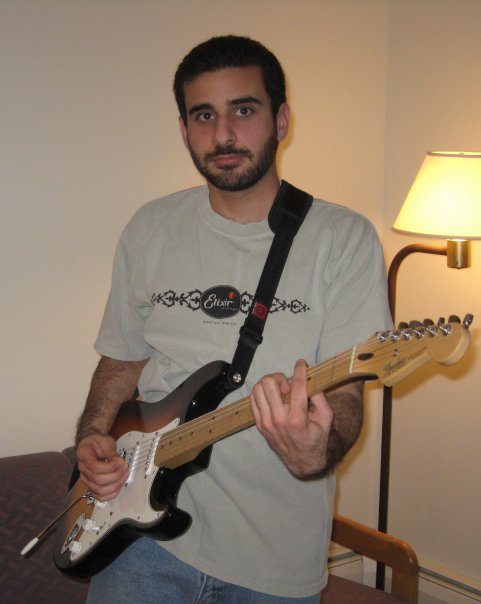One of my favorite travel destinations is the beautiful city of Seville. Seville is located in southern Spain, and it is choc-full of significant cultural and historic landmarks. Come along with me as I take you on a virtual blog tour of this great city!
You'll most likely arrive in Seville by airplane, in which case you can take a taxi to your hotel or hostel. If your hotel or hostel happens to be in one of the older sections of the city, you'll likely be amazed at how easily the driver navigates the narrow, winding roads. Since Spain is seven hours ahead of the United States, you'll probably be jet lagged, and you will want to go to sleep as soon as you arrive. However, you should resist this urge. Instead, pick up a map of the city and start exploring!
One of the first places you should visit is the Guadalquivir River. You can take a stroll along the bank of the river and enjoy the scenery, or you can find a spot to sit and relax. You can also take a guided boat tour of the river, during which you will enjoy great views of several of Seville's landmarks. One such landmark is the Torre del Oro (Tower of Gold), named for its brilliant golden color. The tower, which was built in the 13th century as a military watchtower, is now a naval museum in which visitors can learn about the importance of the Guadalquivir.
As you move toward the center of the city, check out the Plaza de España (Plaza of Spain). The Plaza was built in 1929 for the Spanish-American Exhibition, and its majestic appearance is quite a sight to see. Look closely and you'll notice that the Plaza has several colorfully decorated alcoves, each of which represents one of Spain's provinces. The Plaza de España may also look familiar to Star Wars fans, as some parts of Episode II were filmed there.
The next destination you should visit is the Alcázar. Originally a fort, the Alcázar was converted to a royal palace several centuries ago. In fact, some parts of the Alcázar are still used by the royal family. However, many parts are now open to the public, and visitors can spend hours admiring the picturesque gardens and masterful architecture.
Not far from the Alcázar is Seville's famous cathedral, which is the third largest church in the world. The cathedral was built in the 15th and 16th centuries, and it has 80 lavishly decorated chapels. It also has a huge bell tower known as La Giralda, which is probably the city's most famous landmark. You can climb the ramps to the top of the Giralda and enjoy spectacular views of the entire city. Another important feature of the cathedral is the tomb of a certain man known to the Spaniards as Cristóbal Colón. Do you recognize the name? If not, perhaps you know him better as Christopher Columbus.
If you are lucky enough to have some time remaining after visiting these places, there is plenty more to see and do. Sports fans can check out Seville's two professional soccer teams, Real Betis and Sevilla Fútbol Club. Fans of both teams are extremely passionate, so attending a soccer game in Seville is a very interesting experience! If you like history and/or architecture, there are numerous museums and historic buildings that you can visit. Those who like to shop might want to visit the modern Nervión section of the city, which is home to the El Corte Inglés department store, the Plaza Nervión mall, and many smaller specialty stores. If you're interested in authentic Spanish cuisine, you should also check out some of Seville's many tapas bars. Each one is unique in terms of atmosphere as well as food offerings.
No matter how long you stay in Seville, I can almost guarantee that you won't want to leave. Unfortunately, all good things must come to an end. As you depart, I leave you with Seville's official motto: "no me ha dejado" ("it [Seville] has not left me"). Indeed, your memories of this fantastic city will last a lifetime. Come back soon!
For more information on Seville, see http://www.lonelyplanet.com/spain/seville
Grammar Point
In English, there are four types of sentences.
Simple sentences include one subject and one predicate. An example from this blog entry is "One of my favorite travel destinations is the beautiful city of Seville."
Compound sentences are made up of at least two independent clauses joined by a coordinating conjunction. An example from this blog entry is "Seville is located in southern Spain, and it is choc-full of significant cultural and historic landmarks."
Complex sentences contain a simple sentence and one or more dependent clauses. An example from this blog entry is "As you move toward the center of the city, check out the Plaza de España (Plaza of Spain)."
Compound-complex sentences have two or more independent clauses and at least one dependent clause. An example from this blog entry is "Since Spain is seven hours ahead of the United States, you'll probably be jet lagged, and you will want to go to sleep as soon as you arrive."
Grammar Practice
Look through your own writing and find one sentence of each type. Label the subjects and predicates of each sentence.


"It has not left me" Great motto! Your description of Sevilla makes it sound spectacular. I guess I shouldn't read this class's blogs while hungry, but boy I could go for some delicious tapas and a soccer match.
ReplyDeleteDid you ever read James Michener's travel book about Spain? I think it is called *Iberia*.
I'd love to go there. My stepdaughter was there a couple of years ago, and she loved it. I wish she were there now, but she is visiting Rio and Buzios, and I hear her Facebook postings show her hangliding off a mountain in Brazil. She told me that she was going to a fancy hotel and the Rainforest!
ReplyDelete